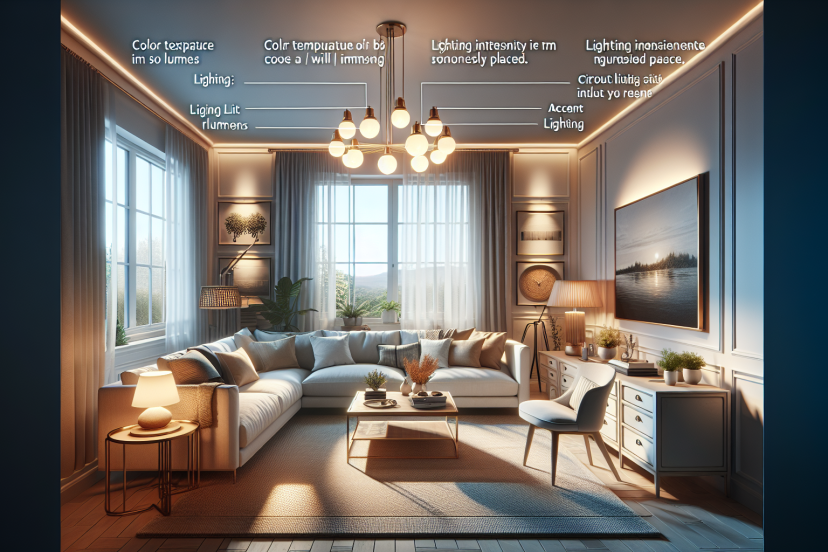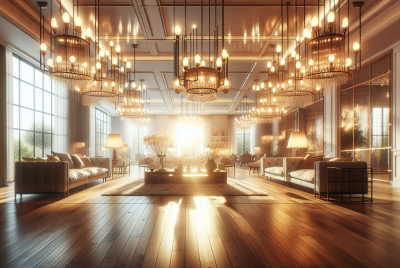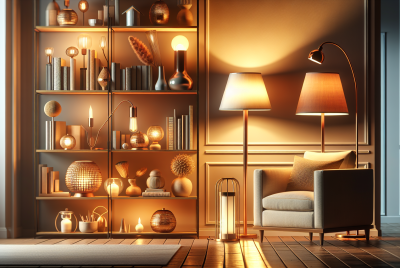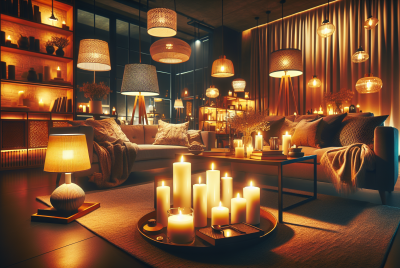How To Choose The Right Interior Lighting For Your Home
Whether you’re redecorating your living room or renovating your entire home, choosing the right interior lighting is essential to creating the perfect ambiance. With so many options available, it can be overwhelming to decide which lighting fixtures are best suited for each room. From pendant lights to chandeliers, this article will guide you through the process of selecting the ideal interior lighting that not only illuminates your space but also enhances its overall aesthetic. By considering factors such as room size, style preferences, and light intensity, you’ll be able to create a warm and inviting atmosphere that reflects your personal taste and enhances the beauty of your home.
Determining Your Lighting Needs
When it comes to choosing the right interior lighting for your home, it’s important to start by determining your specific lighting needs. To do this, begin by making a list of the different rooms in your home. This will help you identify the specific areas that require lighting and allow you to plan accordingly.
Next, consider the function of each room. Think about how you use the space and what activities take place in each room. For example, a kitchen may need bright task lighting for cooking, while a living room may require a combination of ambient and accent lighting for relaxation and entertainment.
In addition to the function of the room, take note of the natural lighting available in each space. Consider the position and size of windows, as well as any obstacles that may block or filter natural light. Understanding the natural lighting in each room will inform your decision on the type and intensity of artificial lighting needed.
Assessing the existing lighting in each room is also crucial. Evaluate the current fixtures, their placement, and their performance. Determine if the existing lighting is sufficient or if additional or updated fixtures are necessary to meet your lighting goals.
Understanding Different Types of Lighting
To choose the right interior lighting, it’s important to have a basic understanding of the different types of lighting available. Let’s explore four main types: ambient lighting, task lighting, accent lighting, and decorative lighting.
-
Ambient Lighting: This type of lighting provides a general, overall illumination to a room. It is often achieved through ceiling-mounted fixtures, such as chandeliers or flush mounts. Ambient lighting sets the tone and mood of a space, creating a comfortable and inviting atmosphere.
-
Task Lighting: Task lighting is designed to illuminate specific areas or surfaces where activities are performed. It is typically brighter and focused, providing ample light for tasks such as reading, cooking, or working. Task lighting can be achieved through desk lamps, under-cabinet lights, or adjustable floor lamps.
-
Accent Lighting: Accent lighting is used to highlight or draw attention to specific objects, architectural features, or artwork in a room. It adds depth and visual interest to the space. Accent lighting can be achieved with track lights, picture lights, or recessed spotlights.
-
Decorative Lighting: Decorative lighting serves both a functional and aesthetic purpose. It adds a decorative element to a room while providing illumination. Decorative lighting fixtures, such as pendant lights or wall sconces, can become focal points and enhance the overall design of a space.
Understanding the purpose and effect of each type of lighting will help you determine which types are most suitable for each room in your home.
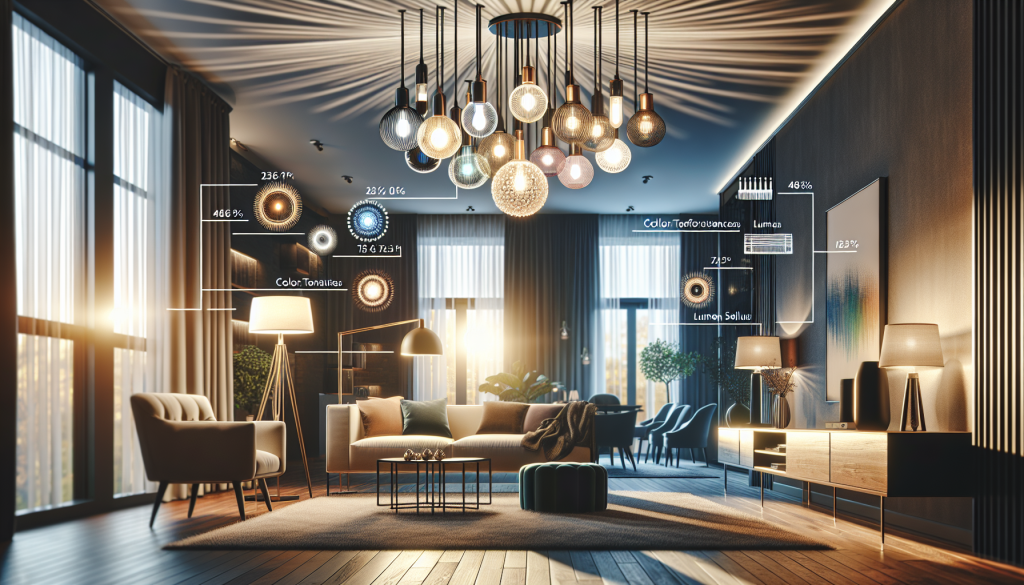
Choosing the Right Bulbs
Once you have a clear idea of the types of lighting fixtures you need, it’s important to choose the right bulbs to achieve optimum lighting. Let’s explore four common types of bulbs: incandescent, halogen, fluorescent, and LED.
-
Incandescent Bulbs: These traditional bulbs produce light by heating a filament inside the bulb. They create warm, soft lighting, but they are less energy-efficient and have a shorter lifespan compared to other options.
-
Halogen Bulbs: Halogen bulbs are brighter than incandescent bulbs and have a longer lifespan. They produce a crisp, white light that is commonly used for task lighting. However, they can get hot and should be handled with care.
-
Fluorescent Bulbs: Fluorescent bulbs are energy-efficient and have a longer lifespan than incandescent bulbs. They produce cool, white light, making them suitable for offices, garages, and other workspaces. However, they may not be ideal for areas where warm, natural lighting is desired.
-
LED Bulbs: LED bulbs are highly energy-efficient and have an exceptionally long lifespan. They are available in a variety of color temperatures and can be used for both ambient and task lighting. While LED bulbs may be initially more expensive, their energy savings and durability make them a cost-effective choice in the long run.
Consider the desired lighting effect, energy efficiency, and longevity when choosing the right bulbs for your interior lighting fixtures.
Considering Light Color and Temperature
In addition to the type of bulb, it’s important to consider the light color and temperature. Light color and temperature can significantly impact the mood and ambiance of a room. Let’s explore three key considerations: understanding color temperature, choosing warm or cool light, and considering the color rendering index.
-
Understanding Color Temperature: Color temperature is measured in Kelvin (K) and determines whether light appears warm or cool. Lower Kelvin temperatures (around 2,700K) produce warm, yellowish light, while higher Kelvin temperatures (around 6,500K) produce cool, bluish light.
-
Choosing Warm or Cool Light: The choice between warm or cool light depends on the desired atmosphere of a room. Warm light (around 2,700K-3,000K) creates a cozy, intimate feel and is ideal for spaces like bedrooms and living rooms. Cool light (around 4,000K-6,500K) provides a brighter, more refreshing feel and is suitable for areas like kitchens and bathrooms.
-
Considering the Color Rendering Index (CRI): The Color Rendering Index measures how accurately a light source reveals the true colors of objects. A higher CRI (ideally above 80) ensures better color accuracy, making it important for spaces where color distinction is crucial, such as art studios or makeup areas.
By taking these factors into consideration, you can choose light colors and temperatures that enhance the overall ambiance and functionality of each room.
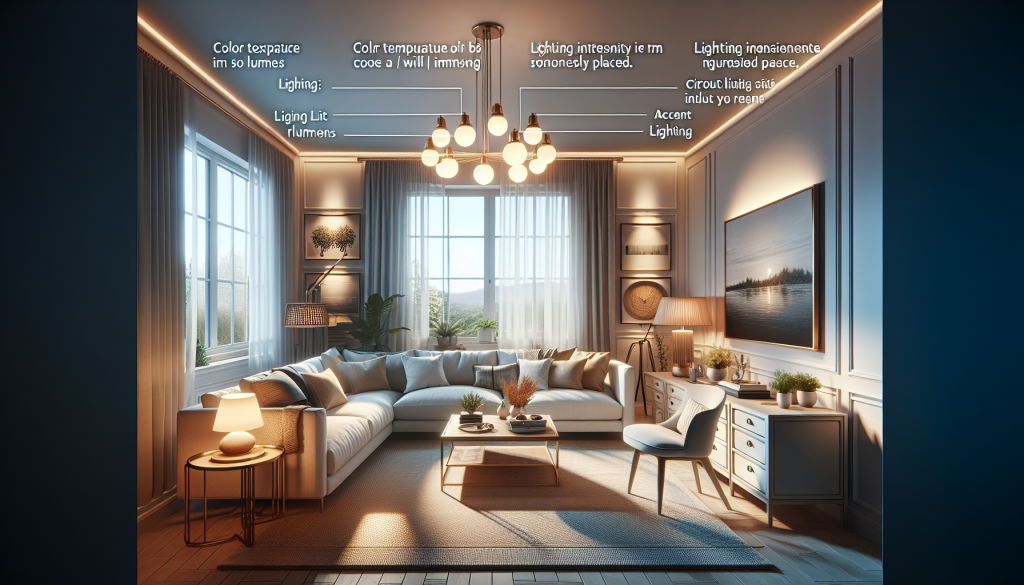
Sizing and Placing Light Fixtures
Determining the right size and placement of light fixtures plays a key role in achieving optimal lighting in your home. Let’s explore three important considerations: determining the right size, considering ceiling height, and placing fixtures for optimal lighting.
-
Determining the Right Size of Light Fixtures: To avoid overpowering or underwhelming a room, it’s crucial to choose light fixtures that are proportionate to the space. As a general rule, add the dimensions of the room in feet, and that will provide an acceptable diameter for your light fixture in inches. For example, a 10-foot by 12-foot room would require a light fixture with a diameter of approximately 22 inches.
-
Considering Ceiling Height: Ceiling height should also be considered when selecting light fixtures. Rooms with high ceilings may warrant larger fixtures or hanging chandeliers, whereas rooms with lower ceilings may require flush mounts or semi-flush mounts. The goal is to strike a balance between functionality and aesthetics while considering the vertical space available.
-
Placing Fixtures for Optimal Lighting: Placement of light fixtures is crucial in achieving the desired lighting effects. For ambient lighting, centrally positioned fixtures provide even illumination throughout the room. Task lighting fixtures should be placed specifically for the activity being performed, such as a desk lamp for reading or a pendant light above a kitchen island for cooking.
By carefully considering the size and placement of light fixtures, you can create a well-lit space that maximizes both functionality and visual appeal.
Determining the Right Light Levels
Understanding the light levels required for each room is key to achieving the desired ambiance and functionality. Let’s explore two important considerations: understanding lumens and wattage, and assessing the desired light level for each room.
-
Understanding Lumens and Wattage: Lumens measure the amount of light emitted by a bulb, while wattage indicates the amount of energy consumed. When selecting bulbs, consider the number of lumens needed to adequately illuminate a room. As a general guide, aim for 20 lumens per square foot for ambient lighting and 50-100 lumens per square foot for task lighting.
-
Assessing the Desired Light Level for Each Room: The desired light level will vary depending on the room’s purpose and personal preferences. Brighter light levels may be desired for areas requiring focused tasks, such as kitchens or home offices. On the other hand, dimmer light levels may create a more relaxed atmosphere in areas like bedrooms or living rooms.
By understanding the relationship between lumens, wattage, and desired light levels, you can effectively choose lighting fixtures and bulbs that meet your specific needs.
Creating a Lighting Plan
After assessing your lighting needs, understanding the different types of lighting, choosing bulbs, considering light color and temperature, and determining the sizing, placement, and light levels, it’s time to create a comprehensive lighting plan for your home. Let’s explore three important considerations: mapping out lighting fixtures for each room, considering the overall aesthetic and style, and choosing compatible light fixtures throughout the home.
-
Mapping out Lighting Fixtures for Each Room: Start by creating a detailed plan for each room, indicating the specific lighting fixtures and their placement. Consider the function and desired ambiance of each room, and ensure that the chosen fixtures support these goals. Take into account the existing wiring and power sources to ensure practicality.
-
Considering the Overall Aesthetic and Style: Lighting is an integral part of interior design, so it’s essential to consider the overall aesthetic and style of your home. Choose fixtures that complement the existing decor, whether it’s modern, traditional, or eclectic. The design of the fixtures, as well as the quality of light they emit, should align with the desired atmosphere and visual appeal.
-
Choosing Compatible Light Fixtures throughout the Home: While it’s important to consider the individual needs and style of each room, don’t forget about the overall flow and cohesiveness of the lighting throughout your home. Aim for a consistent design theme or lighting style that ties the various rooms together. This will create a harmonious and balanced overall lighting experience.
By creating a comprehensive lighting plan, you can ensure that your home is well-lit, functional, and visually appealing in every room.
Considering Energy Efficiency
In addition to aesthetics and functionality, energy efficiency is an important consideration when selecting interior lighting for your home. Let’s explore three ways you can promote energy efficiency: opting for energy-efficient bulbs, using dimmers and timers, and considering natural lighting options.
-
Opting for Energy-Efficient Bulbs: Energy-efficient bulbs, such as LED or fluorescent bulbs, consume significantly less energy than traditional incandescent bulbs. Not only do they help reduce your energy bills, but they also have a longer lifespan, reducing the frequency of bulb replacements.
-
Using Dimmers and Timers: Dimmers and timers are effective tools for controlling and conserving energy. Dimmers allow you to adjust the intensity of light in a room, reducing energy consumption when full brightness is unnecessary. Timers can be programmed to automatically turn off lights when not in use, preventing unnecessary energy wastage.
-
Considering Natural Lighting Options: Incorporating natural lighting options, such as skylights or larger windows, can greatly reduce the need for artificial lighting during daylight hours. Utilizing natural light is not only energy-efficient but also provides a connection to the outdoors and creates a more uplifting and refreshing atmosphere.
By prioritizing energy efficiency in your lighting choices, you can make a positive impact on both the environment and your monthly utility bills.
Finding Inspiration
The world of interior lighting offers a wide range of styles, fixtures, and design possibilities. Finding inspiration is key to discovering the perfect lighting solutions for your home. Let’s explore three sources where you can find inspiration: browsing interior design magazines, exploring online resources and websites, and visiting lighting showrooms or home improvement stores.
-
Browsing Interior Design Magazines: Interior design magazines are a great source of inspiration for lighting ideas. They often feature beautifully designed spaces with carefully selected and positioned light fixtures. Take note of the styles, colors, and lighting techniques used in the featured rooms to gather ideas for your own home.
-
Exploring Online Resources and Websites: The internet is a treasure trove of information and inspiration for interior lighting. Online resources, blogs, and websites dedicated to interior design offer a wealth of ideas, tips, and visual examples. You can explore photos, articles, and videos to gather inspiration and learn about the latest lighting trends and technologies.
-
Visiting Lighting Showrooms or Home Improvement Stores: Sometimes, seeing lighting fixtures in person can provide a better sense of their style, size, and quality. Visit lighting showrooms or home improvement stores to explore the wide variety of options available. You can see the fixtures up close, compare different styles, and seek assistance from knowledgeable staff.
By immersing yourself in the world of interior lighting through various sources, you can find inspiration that sparks creativity and helps you make informed decisions for your own home.
Considering Budget and Cost
Setting a budget and considering the cost of lighting fixtures and bulbs is an important aspect of choosing the right interior lighting for your home. Let’s explore three considerations when it comes to budget and cost: setting a lighting budget, comparing prices and quality, and considering long-term energy savings.
-
Setting a Lighting Budget: Before embarking on your lighting project, determine how much you are willing and able to spend. Consider how much lighting you need, the complexity of the wiring, and the types of fixtures and bulbs you desire. Setting a budget will help guide your choices and prevent overspending.
-
Comparing Prices and Quality: When selecting lighting fixtures and bulbs, it’s important to compare prices and quality. Explore different brands and retailers to find the best balance between cost and quality. Consider the durability, functionality, and warranty of the fixtures to ensure your investment is worthwhile.
-
Considering Long-Term Energy Savings: While energy-efficient bulbs may initially be more expensive, they offer long-term energy savings that can offset the upfront cost. Calculate the estimated energy savings over time to determine if the additional cost of energy-efficient bulbs is justifiable for your budget.
By considering your budget and assessing the cost-effectiveness of various lighting options, you can make informed decisions that align with your financial goals and priorities.
In conclusion, choosing the right interior lighting for your home involves careful consideration of your specific lighting needs, understanding the different types of lighting, selecting the right bulbs, considering light color and temperature, sizing and placing light fixtures, determining the right light levels, creating a lighting plan, promoting energy efficiency, seeking inspiration, and considering budget and cost. By following these steps and taking the time to research and plan, you can create a well-lit, inviting, and energy-efficient home that suits your personal style and enhances your everyday living experience.

